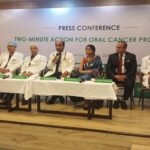healthysoch
New Delhi, May 25, 2019 :
Health, environment and climate change
Member States agreed a new global strategy on health, environment and climate change: the transformation needed to improve lives and well-being sustainably through healthy environments. The strategy provides a vision and way forward on how the world and its health community need to respond to environmental health risks and challenges until 2030.
Risks include environmental physical, chemical, biological and work-related factors.
They also agreed a plan of action on climate change and health in small island developing States. The plan has four strategic lines of action: empowerment (supporting health leadership in small island developing States); evidence (building the business case for investment); implementation (preparedness for climate risks, adaptation and health-promoting mitigation policies); resources (facilitating access to climate and health finance).
Noncommunicable diseases
Member States agreed a decision to accelerate and scale up action to prevent and treat noncommunicable diseases, primarily cancer, diabetes, and heart and lung diseases, and to meet global targets to reduce the number of people dying too young from these diseases.
NCDs are the leading cause of premature death: WHO estimates that 15.2 million people died in 2016, aged between 30 and 70 years, from one of these conditions.
The Health Assembly heard that for the first time since the initial United Nations General Assembly High-level Meeting on NCDs in 2011, there are promising signs that health outcomes are improving thanks to action on NCDs. These include a downward trend in prevalence of tobacco smoking, heavy episodic drinking of alcoholic beverages and raised blood pressure.
Treatment interventions, including for hypertension, have also progressed through strengthening primary health care services. There has also been an increase in the number of countries with national standards for managing major NCDs through a primary care approach.
Later this year, WHO will publish a technical note setting out indicators for countries to annually measure progress on the commitments they made at the UN General Assembly to address NCDs and include in reports to the United Nations Secretary General.
World Chagas Day and Year of the Nurse and Midwife
Today Member States also agreed to establish World Chagas Day, to be celebrated each year on 14 April. Chagas, a neglected tropical disease, currently affects between 6 and 7 million people, mostly in Latin America. They also declared 2020 the Year of the Nurse and the Midwife.
Pandemic Influenza Preparedness Framework
Further to requests made by the World Health Assembly in 2017 and 2018, today delegates considered the final text of WHO’s analysis of the issues raised by the 2016 PIP Framework Review Group’s recommendations concerning seasonal influenza and genetic sequence data. The Health Assembly also considered the information provided by the Secretariat regarding implementation of the recommendations contained in the Director-General’s report on progress to implement decision WHA70(10).
Delegates adopted a decision to request WHO, inter alia, to work with the Global Influenza Surveillance and Response System (GISRS) and other partners to improve influenza virus sharing, and to prepare a report with Member States and stakeholders on influenza virus sharing and public health in the context of legislation and regulatory measures including those implementing the Nagoya Protocol.
Furthermore, the Health Assembly requested more information on the prototype search engine previously developed and asked WHO to explore possible next steps in raising awareness of the PIP Framework among databases, data users and data providers.
The decision also agreed to amend a footnote relating to SMTA2 (Standard Material Transfer Agreement 2) in the PIP Framework. This will help ensure that the integrity of the PIP Framework access and benefit-sharing system continues to be well maintained.
The PIP Framework is an international normative instrument adopted by the Health Assembly in 2011 that brings together WHO, Member States, industry, and other relevant stakeholders to implement a global approach to pandemic influenza preparedness and response. The objective of the PIP Framework is to ensure a fair, transparent, equitable, efficient and effective system for, on an equal footing, the sharing of influenza viruses with human pandemic potential and access to vaccines and other benefits.
healthysoch







